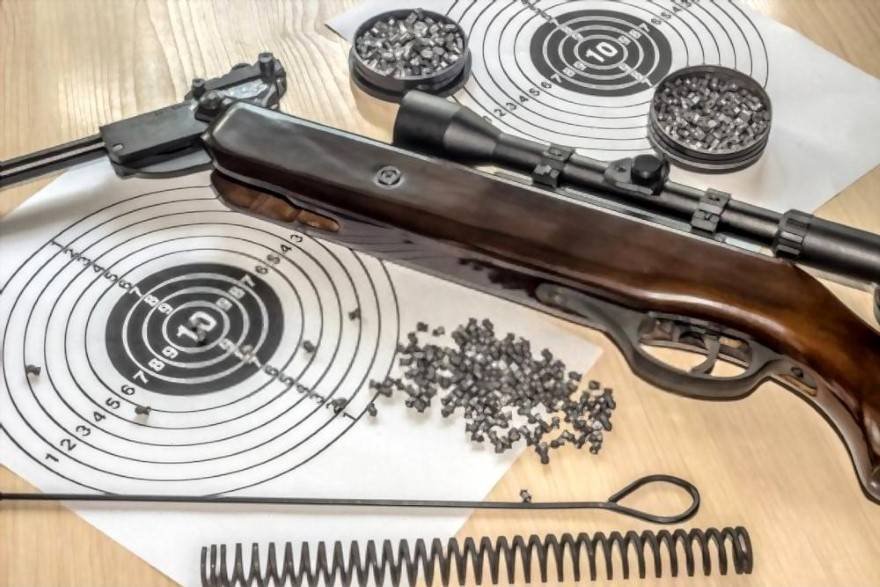Every airgun shooter wants to develop master skills. With the variety of high-precision air rifles out there, it gets easier. Although sophisticated airgun technology enables you when hunting, achieving airgun marksmanship takes time and practice. Even if you are an expert shooter, marksmanship training can help you upskill and acquire new shooting techniques. If you’re a beginner in the field, you should also spend some time developing your shooting technique and honing your skills. Want to increase your success at tight-group takedowns off the bench?

Master your rifle
Rifle handling takes some practice to achieve mastery. You should learn every inch of your air gun to become a smoother, more precise handler. With this, you will find that aligning your optics or scope and mounting your air rifle comes more naturally. Ultimately, it will help you determine the ideal time to release the trigger when shooting. Also, it will improve your follow-through hit technique. You owe it to your quarry to make the strike as seamless and painless as possible.
Develop quarry intelligence
You must anticipate your quarry’s preconditioned responses and instincts in the field. It requires complete mindfulness, where your body and mind can adapt to the environment. You want to learn the routine and behaviors of your quarry to predict reactions to certain situations. With you investing time into tracking your quarry movement patterns, you will always know when, where, and how to strike.

Practice correct breathing
Hunting is adrenaline-boosting, so being stealthy out there in the wild will take some practice. With the discomfort, physical exertion, and complicated positioning you endure when shooting, of course, your breathing will be off-key. You want to minimize distractions as much as possible when aiming your air rifle, and firing at a target. If you learn correct breathing control, you can extend your respiratory pause to fine-tune your aiming/firing disposition.
Correct pellet selection
Another thing you must consider when developing airgun marksmanship is your pellet selection. It might be news to you or not, but the weight, shape, and make of the pellet can impact performance. Air rifle barrels deliver varying levels of performance depending on the pellet type. You must try different air gun pellets to select the most efficient option for your barrel.
Fine-tune your range-finding skills
Besides knowing the trajectory of your pellet, it is equally important to determine where your target falls in the mapping. Using air rifle scopes and mounts will help with the accuracy of the rifle. Laser rangefinders are also an invaluable tool to markup precise calculations, but you can employ other optics as well. For example, you can bracket your target using your mil-dot reticle to estimate the distance accurately. Once you have your quarry in the reticle lineup, you can adapt your riflescope to bring it into focus. With higher magnification settings, you will gain some advantage when fine-tuning focus on your prey.

Mastering trigger control
Here is where you will find yourself fumbling a lot. You are not alone. Many seasoned airgun shooters are yet to master trigger control. To drive excellent outcomes, you must achieve perfect trigger control, position, and develop your follow-through technique. To increase accuracy, you must master correct finger placement, which is halfway between your finger point and its first joint. You want to maintain this position throughout, even as you discharge your rifle. If you keep this follow-through strategy consistent, you’re less likely to snatch the trigger and will maintain efficient control of your firing cycles. You should practice this technique regularly to achieve mastery.
Calculating ballistics accurately
A series of determining influences can negatively impact your pellet in flight and dramatically change the trajectory. Long-range scoping is prone to this kind of hindrance, especially in windy environments. You should learn how to calculate possible aim points that are consistent with the changing trajectory of your preset projectile. In doing so, you also want to set a reasonable starting point depending on your ideal hunting distances, caliber, and ballistics.
Try different positions
You should perfect your positioning techniques by exploring your target territory or similar environs. Typical practice sessions in a controlled environment will not give you the stimulus you need to maneuver the wild. While it does help you improve your aim and other skills, it limits your training in areas of adaptability. If you train in the wild, you will learn how to use your environment to your advantage without sacrificing precision.
